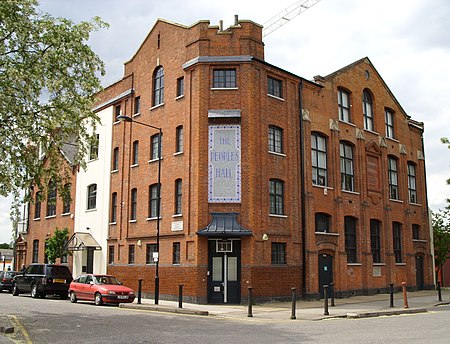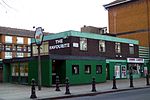Frestonia
1977 disestablishments in England1977 establishments in England1977 in London20th century in the Royal Borough of Kensington and ChelseaAnarchism in the United Kingdom ... and 7 more
CountercultureEngvarB from May 2018Former unrecognized countriesLegalized squatsMicronationsMicronations in EnglandSquats in the United Kingdom

Frestonia was the name adopted by the residents of Freston Road, London, when they attempted to secede from the United Kingdom in 1977 to form the Free and Independent Republic of Frestonia. The residents were squatters, many of whom eventually set up a housing co-op in negotiation with Notting Hill Housing Trust, and included artists, musicians, writers, actors and activists. Actor David Rappaport was the Foreign Minister, while playwright Heathcote Williams served as Ambassador to the United Kingdom.
Excerpt from the Wikipedia article Frestonia (License: CC BY-SA 3.0, Authors, Images).Frestonia
Olaf Street, London
Geographical coordinates (GPS) Address Nearby Places Show on map
Geographical coordinates (GPS)
| Latitude | Longitude |
|---|---|
| N 51.510413888889 ° | E -0.21731388888889 ° |
Address
The People's Hall
Olaf Street
W11 4BE London (Royal Borough of Kensington and Chelsea)
England, United Kingdom
Open on Google Maps








